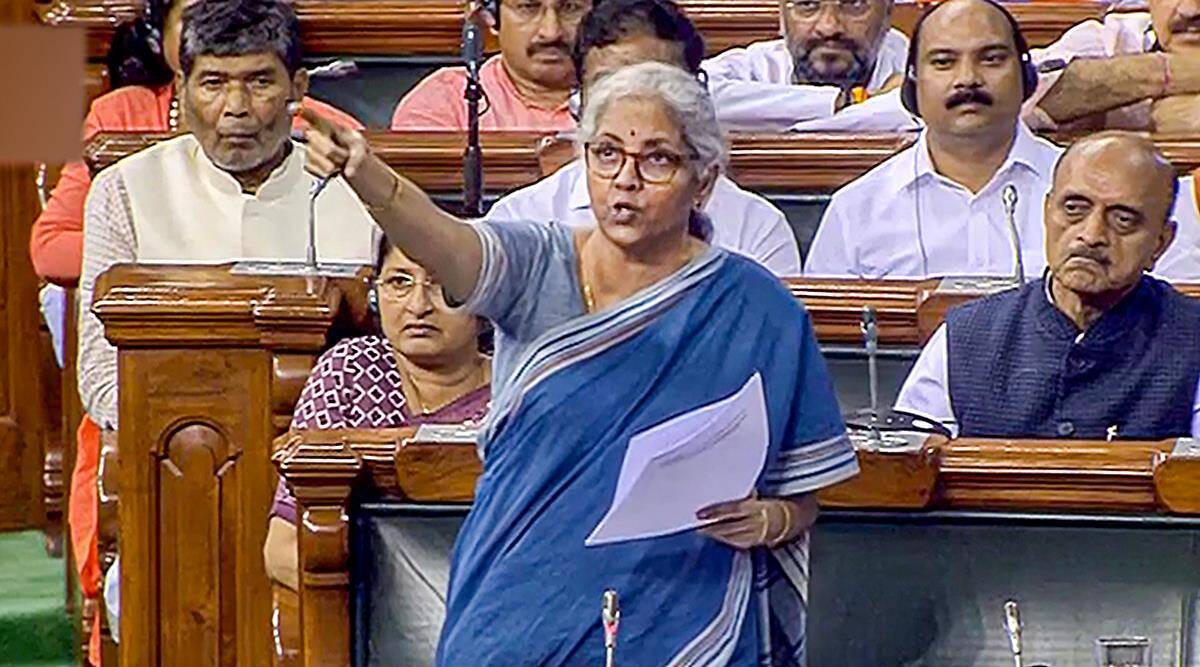02 Aug , 2022 By : Monika Singh

There is no question of the Indian economy slipping into recession or witnessing stagflation, even though several countries across the globe are facing enhanced risks of either a sharp slowdown in growth or recession, finance minister Nirmala Sitharaman asserted on Monday, defending her government’s handling of the economy.
Replying to a debate on price rise in the Lok Sabha on Monday, Sitharaman indicated the government is open to initiating more measures to rein in inflation, on top of the supply-side steps already announced. She also criticised the Opposition parties for squarely blaming the central government for imposing a 5% goods and services tax (GST) on labelled and un-branded pre-packaged food items, stressing that it was a collective decision by the GST Council after approval from all state finance ministers.
“There was not a single voice of opposition to the proposal in the (last) GST Council meeting. It was done to plug leakages,” the minister said, responding to fears that prices of essentials will rise. Products such as wheat, rice, suji, puffed rice and curd, when sold loose and not pre-packed and labelled, won’t attract GST, she added.
“All (opposition-ruled) states, including Punjab, Rajasthan, Tamil Nadu, West Bengal, Telangana and Kerala agreed with the decision,” Sitharaman said. She highlighted that the pandemic and the Ukraine conflict disrupted the global supply chains, which have driven up inflation globally and caused a slowdown in growth. However, India is in a much better situation than most others, she highlighted.
India will likely grow at 7.4% in FY23, against 8.9% in the previous fiscal (which came on a sharply-contracted base), according to the International Monetary Fund (IMF).The IMF has warned of a possible global recession in 2023.The minister conceded that retail inflation in India remained around 7% but highlighted that it was much lower than what even some advanced economies are witnessing (inflation in the US was at a 40-year high of 9.1% in June) and certain way below what the Indian economy, under the UPA, had to bear in the aftermath of the global financial crisis and the taper tantrum.
Even though those crises were much smaller in magnitude, compared with the combined impact of the pandemic and the Russia-Ukraine conflict, retail inflation during the UPA period remained above 9% for 22 of 28 months.On nine occasions, retail inflation was in double-digits, she added.“I have no hesitation to accept that inflation exists in India, but at what level?” she asked. Retail inflation has exceeded the upper band of the RBI’s medium-term target of 2-6% for a sixth straight month in June.
The government has in recent months cut the excise duty on fuel and also reduced the import duty on a number of products, ranging from lentils to coal and nickel. It also raised the export duty on iron ore and select steel products to boost domestic supplies. While highlighting the good performance in certain high-frequency indicators, the minister said the GST collection has exceeded Rs 1.4 trillion for the fifth straight month now.
While about 4,000 banks in China are reportedly on the verge of bankruptcy, in India, the gross bad loan ratio hit a six-year low of 5.9% in FY22. Even in the debt-to-GDP ratio, India’s position (general government debt stood at 86.9% of GDP in FY22) is better than many countries, she added. Countering the Opposition’s allegation that the central government has been cornering a huge amount of petroleum taxes, the minister said, according to the RBI data, total developmental expenditure incurred by the Modi government between 2014 and 2022 was 90.9 trillion.In contrast,49.9 trillion was spent on this during 2004-14 (UPA period), Sitharaman said.
0 Comment